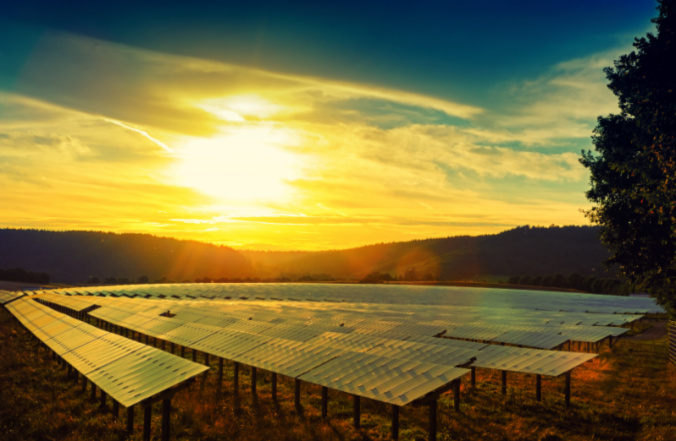PV-Solar is becoming the lowest-cost option for new electricity generation in most of the world, which is expected to propel investment growth in the coming years. PV-Solar generation has increased by a record 179 TWh (up 22%) in 2021, to exceed 1000 TWh. However, an average annual generation growth of 25% between 2022-2030, is needed to follow the Net Zero Emissions by the 2050 Scenario.
In 2020, the global electricity demand including off-grid rural demand was 27 PWh a year. DNV’s report Energy Transition Outlook 2022 projects demand to grow to 62 PWh/yr by 2050. This is an average annual growth of 2% a year. In 2020, renewables generated 29% of the electricity with almost two thirds of this from hydropower. As decarbonization pressure grows and the costs of PV-Solar, wind generation, and battery storage costs continue to fall, variable renewable energy sources (VRES) will take a greater share. VRES are expected to overtake fossil-based electricity generation globally by 2035. By 2050, 83% of the world’s grid-connected electricity will be generated from renewable source and 69% from variable renewables.
According to Wood Mackenzie, the utility-scale sector will lead the solar industry’s growth over the next five years with 162 GW of new capacity. Cumulative solar installations across all market segments will nearly triple in size, growing from 129 GW today to 336 GW by 2027. Despite the supply chain constraints that slowed the market, solar accounted for 39% of all new electric generating capacity additions in the first half of 2022. The U.S. solar market now represents about 4.5% of the nation’s electricity mix.
VRES come with their own limitations of variability due to dependency on sun, clouds, and wind. Battery Energy Storage Systems (BESS) are seen as a reliable resource to facilitate the required stability of VRES. BESS does not only provide stability to the intermittent nature of VRES but can also help with optimal utilization of over production, that otherwise may go wasted due to utility enforced curtailments.
As the deployment of utility scale VRES increases, a corresponding deployment of BESS is expected. The US energy storage market set a new record in Q2 of 2022, with grid-scale installations totaling 2,608 megawatt hours (MWh) – the highest installed capacity for any Q2 on record. However, supply chain issues, transportation, and interconnection queue challenges continue to impact the schedule of utility scale storage projects. Over 1.1 GW of projects scheduled to come online in Q2 got delayed or cancelled, but still over 60% (over 700MW) of these projects are expected to be up and running in Q3 and Q4 of 2022.
As part of the policy support to meet aggressive Net Zero Emissions targets, the US Congress passed a critical piece of legislation The Inflation Reduction Act (IRA). This act ensures a solar investment tax credit (ITC) extension of 10 years and the expansion of ITC benefits to standalone storage projects as well. This means that for the first time, batteries don’t have to be paired directly onsite with PV-Solar generation to take advantage of that 30% reduction in the upfront cost of project equipment. As a result, Wood Mackenzie forecasts 59.2 GW of energy storage capacity to be added through 2026. As stated in the IRA, the storage ITC is available for batteries over 3 kWh in the residential market and over 5 kWh in the commercial market. Details are expected to be determined by the Treasury Department over the next few months, but this development is already changing sales conversations across the country.
Increasing energy curtailment of otherwise free renewable energy can also contribute to upsurge in BESS deployment. As deployment of VRES is increasing, so is the capacity. Though this capacity is not always required, resulting in surplus energy curtailed or shut off when the energy demand is low. For example, since 2014, the average duration of continuous renewable energy curtailment in California has increased from 2.5 hours to 9.5 hours. Many of these curtailment events span multiple days, with the longest event being 71 hours in duration.
The amount of renewable energy curtailed is growing rapidly. In 2022, California has curtailed more than 1,860 gigawatt-hours of wind and solar, which is enough to power more than 200,000 homes for a year. Curtailment during multi-day events specifically totaled more than 110 gigawatt-hours, up more than 37 times since 2014.
As the size of the renewable energy projects grow, deployment of short duration energy storage (SDES) up to 4 hours may not be enough. Long Duration Energy Storage System (LDES) for the 4 hours systems, or Multi Day Energy Storage (MDES), will be required for optimal utilization of available free renewable energy. Newer technologies and chemistries are being explored and funded for R&D and testing purposes. DoE’s one such initiative Everyone, Everywhere Initiative (LD ESEE) is putting up funding worth $505 million towards Long Duration Energy Storage. These technologies are poised to deliver long-term benefits that include grid reliability and resiliency, firmed renewables over any weather event or season, improved local air quality, job creation, and local economic development.
Are you ready for the expected upsurge in deployment of BESS/ESS projects? Nor-Cal Controls will provide the required information and guidance on custom SCADA/Historian projects along with custom PPC/EMS to meet all your PPA requirements, with optimal utilization of available resources at your site. Contact us to discuss your existing or upcoming PV-Solar, PV-Solar+BESS or BESS only project. We can work with you on both AC-Coupled or DC-Coupled configurations and have experience with most major OEMs.





